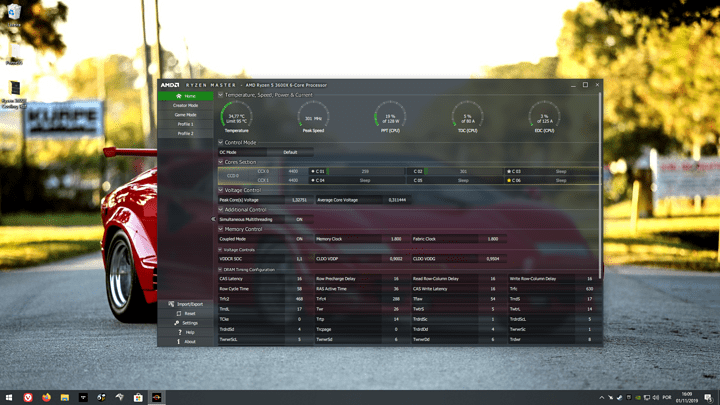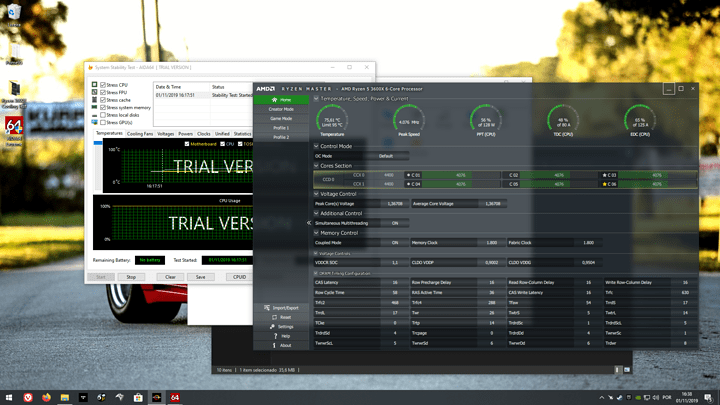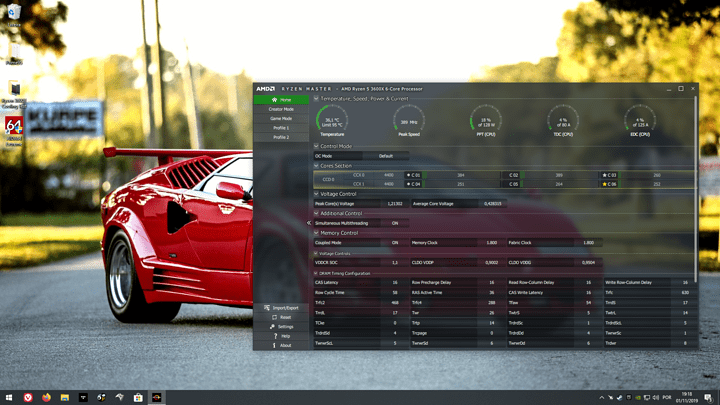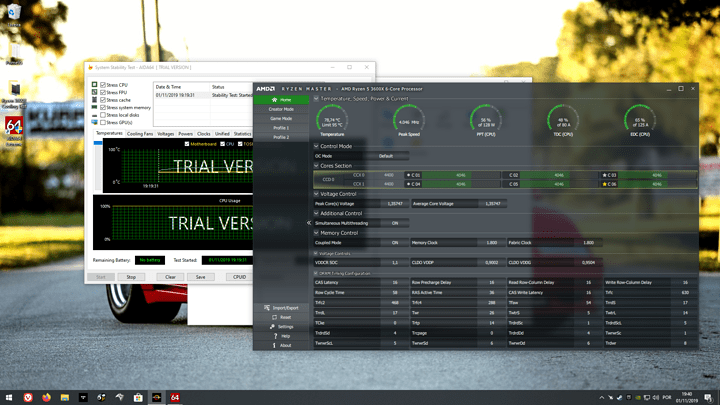Recently i upgraded my system from a Ryzen 7 1700 to a Ryzen 5 3600x and appart from setting up the memory and reinstalling the OS and drivers, i kept it in all stock settings.
The hardware i’m using in direct relation with the CPU is an ASRock Fatal1ty X370 Professional Gaming motherboard (BIOS version 5.80), a Team Group Xtreem 3600mhz 16gb RAM kit and a Thermaltake Water 3.0 280mm watercooler kit.
I always like to benchmark my system and monitor it for any flaws i might encounter and from the get go i noticed i noticed that the CPU temperature was a bit out of whack, not only there were +15ºc spikes between the system being on idle and performing minor operations, when i decided to run Cinebench R20 the CPU temperature quickly jumped to around 76ºc and it stayed there for the duration of the benchmark, while not at all a daily use percentage, it did concern me as i hadn’t seem such high temperatures even on my OCed 1700.
I checked the voltage spikes and the value doesn’t seem to be abnormal, 1.372v was the maximum voltage spike registered by both HWiNFO64 and Ryzen Master during the benchmarks i ran, which is a tad lower than the 1.375v i constantly ran on my 1700, and yet the temperature was consistently higher all around, i even tried different thermal compounds (up to this point i was using Cooler Master’s Mastergel Maker Nano) and application methods, but there was no significant drop in temperature.
Talking with the members on the Ryzen 3000 & Navi Megathread we came up with a theory that the cooler could’ve been the culprit, so i ordered a Scythe Ninja 5 air cooler to test the theory.
Last friday the cooler arrived and i set out for testing.
The methodology was:
- All stock settings on the BIOS, appart from the RAM;
- Both coolers would use the same Cooler Master Mastergel Maker Nano thermal compound in the same “3 dot method” application;
- All system coolers/pumps at full speed
- Both coolers would be tested in the same case, an InWin 805 with closed panels and removed front panel (for mildly increased airflow);
- When testing the Scythe Ninja 5, i also installed a pair of Akasa Apache 140mm fans on the same spot as the watercooler was installed;
- Test 1 would be the temperature after 5 minutes of system idle;
- Test 2 would be the temperature after 20 minutes of AIDA64 system stability test.
As simple as it gets really, so let’s see how it all went down.
For the record, the temperature outside was as follows, and i had my air-con set at 24ºc for the entirety of the test.
Temperature outside
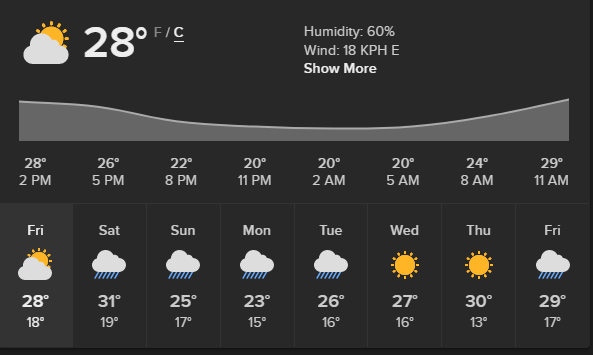
Let’s start with the Thermaltake Water 3.0 280mm watercooler, which is the same as any other Asetek based 280mm cooler, with the added flair of a pair of RGB Riing Radiator fans.
Here’s the temperature after 5 minutes of idle:
And here’s the temperature after 20 minutes of stress test, which is what i’ve been seeing since i got the CPU:
And now for the Scythe Ninja 5, which is a large, 6 heatpipes, almost silent air cooler,
Here’s the temperature after 5 minutes of idle:
And here’s the temperature after 20 minutes of stress test:
Immediately after seeing the results i was at a loss, i re-tested both coolers with the case completely opened but didn’t record the data as there was no significant improvement in the temperatures, proving as well that the airflow wasn’t necessarily the culprit in this situation.
So there we go, i’m left with more questions than answers, what should i try next, the sit and wait game for a new BIOS update, should i contact AMD and tell them about this issue, try undervolting? Maybe i’m overthinking this and the system is just normal, you guys tell me.
